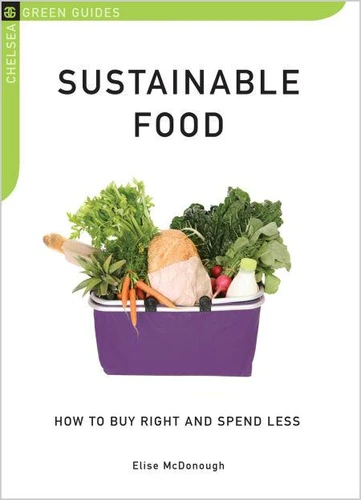Sustainable Food. How to Buy Right and Spend Less
Par :Formats :
Disponible dans votre compte client Decitre ou Furet du Nord dès validation de votre commande. Le format ePub protégé est :
- Compatible avec une lecture sur My Vivlio (smartphone, tablette, ordinateur)
- Compatible avec une lecture sur liseuses Vivlio
- Pour les liseuses autres que Vivlio, vous devez utiliser le logiciel Adobe Digital Edition. Non compatible avec la lecture sur les liseuses Kindle, Remarkable et Sony
- Non compatible avec un achat hors France métropolitaine
 , qui est-ce ?
, qui est-ce ?Notre partenaire de plateforme de lecture numérique où vous retrouverez l'ensemble de vos ebooks gratuitement
Pour en savoir plus sur nos ebooks, consultez notre aide en ligne ici
- Nombre de pages486
- FormatePub
- ISBN978-1-60358-248-3
- EAN9781603582483
- Date de parution15/09/2009
- Protection num.Adobe DRM
- Taille1 Mo
- Infos supplémentairesepub
- ÉditeurChelsea Green
Résumé
Wondering whether it's worth it to splurge on the locally raised beef? What about those organic carrots? New in the Chelsea Green Guides series, Sustainable Food: How to Buy Right and Spend Less helps the average shopper navigate the choices, whether strolling the aisles of a modern supermarket or foraging at a local farmers market. This down-to-earth, casual guide-small enough to be slipped into your pocket-answers these and other questions for the shopper: What are the differences among organic, local, fair-trade, free-range, naturally raised, and biodynamic foods? How affordable is it to subscribe to a CSA farm-and what are the advantages? Is it better to choose wild Alaskan salmon at $18.99, or the Chilean farmed fish at $11.99? What cooking oils can be sustainably sourced? How can a food co-op increase access to, and affordability of, healthier, Earth-friendly foods? Where can you find sustainably produced sugar, and are there any local replacements for sweeteners from faraway lands? What do the distinctions between shade-grown and trellised coffee mean? Is shark okay to eat? How about mackerel? Why is the war on plastic bags so important? Sustainable eating just got easier.
Wondering whether it's worth it to splurge on the locally raised beef? What about those organic carrots? New in the Chelsea Green Guides series, Sustainable Food: How to Buy Right and Spend Less helps the average shopper navigate the choices, whether strolling the aisles of a modern supermarket or foraging at a local farmers market. This down-to-earth, casual guide-small enough to be slipped into your pocket-answers these and other questions for the shopper: What are the differences among organic, local, fair-trade, free-range, naturally raised, and biodynamic foods? How affordable is it to subscribe to a CSA farm-and what are the advantages? Is it better to choose wild Alaskan salmon at $18.99, or the Chilean farmed fish at $11.99? What cooking oils can be sustainably sourced? How can a food co-op increase access to, and affordability of, healthier, Earth-friendly foods? Where can you find sustainably produced sugar, and are there any local replacements for sweeteners from faraway lands? What do the distinctions between shade-grown and trellised coffee mean? Is shark okay to eat? How about mackerel? Why is the war on plastic bags so important? Sustainable eating just got easier.



